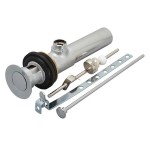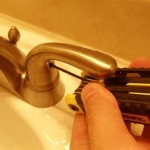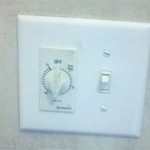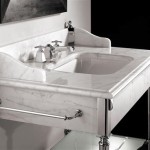Standard Bathroom Sink Plumbing: Essential Aspects
A standard bathroom sink serves as a crucial part of every household, providing an essential means for personal hygiene and cleanliness. Understanding the plumbing associated with bathroom sinks is vital for efficient maintenance and troubleshooting. This guide will delve into the essential aspects of standard bathroom sink plumbing, providing valuable insights for homeowners and plumbing enthusiasts alike.
Types of Bathroom Sink Fixtures
Bathroom sinks come in various types, each with unique plumbing requirements:
- Pedestal Sink: Mounted on a pedestal, these sinks feature a single open basin.
- Wall-Mounted Sink: Installed directly onto the wall, providing a space-saving option.
- Undermount Sink: Fitted beneath the countertop, creating a seamless and modern appearance. li>Vessel Sink: Rests on top of the countertop, resembling a bowl or vessel.
Supply Lines and Valves
Water supply to the sink is regulated by supply lines and valves. Hot and cold water lines, typically made of copper or flexible PEX tubing, connect to the sink's faucet. Shut-off valves, located behind the sink, control the flow of water to the faucet, facilitating repairs without affecting the rest of the bathroom plumbing.
Drain Assembly and Trap
Wastewater from the sink is directed through a drain assembly and trap. The drain assembly consists of a strainer and a tailpiece that connects the sink to the drainpipe. The trap, usually a U-shaped pipe, prevents sewer gases from entering the bathroom by holding a small amount of water.
P-Trap and Vent
The P-trap under the sink is connected to a drainpipe that leads to the main drain line. A vent pipe connected to the drainpipe allows air to enter the system, preventing the formation of a vacuum and ensuring proper drainage.
Faucet Types and Installation
Bathroom sink faucets come in various styles and types, including single-handle, two-handle, and touchless options. They can be mounted on the sink, the countertop, or the wall, depending on the sink type. Faucets require proper installation to prevent leaks and ensure optimal performance.
Sink Drain Stopper
Most bathroom sinks have a drain stopper to prevent water from draining when not in use. Stoppers can be operated by a lever, a pop-up mechanism, or a stopper with a chain. They help retain water for tasks like shaving or brushing teeth.
Maintenance and Troubleshooting
Regular maintenance and timely troubleshooting can prevent plumbing issues with standard bathroom sinks. Regularly cleaning the sink and drain strainer prevents clogs. Checking for leaks around the faucet and supply lines is essential. If leaks occur, they should be repaired promptly to avoid water damage. If the sink is not draining properly, it could indicate a clog in the P-trap or drainpipe, requiring further inspection and cleaning.
Conclusion
Understanding the essential aspects of standard bathroom sink plumbing is crucial for efficient maintenance and troubleshooting. By familiarizing yourself with the types of fixtures, supply lines, drain assemblies, traps, vent pipes, faucets, and drain stoppers, you can confidently address common plumbing issues. Proper maintenance practices, such as cleaning and leak checks, can extend the lifespan of your bathroom sink plumbing and ensure a comfortable and functional bathroom space.

How To Plumb A Bathroom With Multiple Plumbing Diagrams Hammerpedia

Bathroom Sink Plumbing

Standard Vanity Height With Vessel Bathroom Sink Drain Kitchen Countertop Faucets

Bathroom And Restroom Measurements Standards Guide

Standard Height Of Bathroom Fittings Fantasticeng

What Is The Bathroom Sink Plumbing Rough In Heights

What Is The Bathroom Sink Drain Rough In Height Guide
How To Measure A Vanity Sink Bathroom Dimensions Standard Size Vevano
:strip_icc()/102021909-27c000b6bfff4d298e8df81f3d21ba12.jpg?strip=all)
The Ultimate Guide To Bathroom Plumbing Diagrams And Layouts

What Is The Standard Bathroom Sink Height Finest
Related Posts







